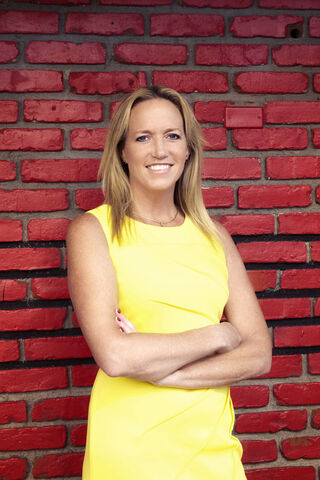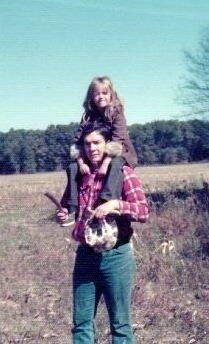Depression
Turning from Depression to the Light of Hope
A call to action on World Mental Health Day.
Posted October 7, 2022 Reviewed by Tyler Woods
Key points
- Today, over one billion people in the world have mental health disorders.
- World Mental Health Day, October 10th, calls on all of us to make mental health and wellbeing a personal priority.
- Research shows that hopelessness leads to depression and suicide but that we can proactively manage hopelessness and build hope.
- Hope is a skill that each of us can learn and develop.
On October 10, World Mental Health Day, the World Foundation for Mental Health calls upon all of us to make mental health and well-being a global priority.
In the past few years, many of us have struggled with depression, anxiety, and hopelessness. The statistics are staggering. Over one billion people around the world have mental health problems. According to the World Health Organization, over 280 million people are suffering from depression, over 700,000 die from suicide each year, and since the Covid pandemic, anxiety, and depression have increased globally by 25 percent (WHO, 2021, 2022).
Young people are especially at risk. According to recent studies, three in five American college students have been diagnosed with a mental health condition, primarily anxiety and depression; one in five has thoughts of suicide; and 40 percent know someone who has actually attempted suicide (Burrell, 2022; Leonhardt, 2022; University of Michigan, 2022).

Concerned about these escalating rates of depression and suffering, I interviewed Kathryn Goetzke, a representative to the United Nations for the World Federation for Mental Health and founder of the International Foundation for Research and Education on Depression (iFred).In 2018 she launched Hopeful Mindsets, to help people develop hope. Through the years, she has presented about the need for hope around the globe at the United Nations, World Bank, Harvard, The Kennedy Forum, and elsewhere.
Her search for hope began with a personal tragedy. When she was eighteen, her father died by suicide. He was her hero, her role model who loved and encouraged her, introducing her to the world of business and banking, taking her to his office in downtown Chicago when he went in to work on weekends. But he also suffered from recurrent depression.
“I spent my whole life trying to help heal my dad and make him happy,” she writes. “He was a really important part of my life” (Goetzke, 2022a). Then, suddenly, he was gone. On a cold February morning during her first year of college, she called home, only to learn that her father had killed himself.
For years she felt guilty…if only she’d been home when he needed her. She spiraled into her own depression, attempting suicide herself. Yet, instead of surrendering to despair, she developed a new sense of purpose. Seeking to understand depression and its causes, she began doing extensive research. She then realized that her father had been “unable to manage the stress response and didn't understand the physiology of what was happening in his body when he was triggered by something. So much of it was trauma and grief of his own” that he didn’t have the tools to handle.

Committed to finding these tools, she began searching for “a programmatic solution for suicide prevention.” When she found that “across the board in the literature, hopelessness is the single consistent predictor of suicide,” she realized that what people need is a way to proactively manage hopelessness and build hope.
From her research in positive psychology, mental health, and neuroscience, she discovered powerful strategies that she uses to build greater hope in her own life and shares in her work to help others. She describes these hope strategies and her personal journey in her new book, The Biggest Little Book About Hope. She dedicated the book to her father, as she writes, “using your loss to build a legacy of hope and happiness, bringing the brilliance you shared with me in business to make it accessible and sustainable for all” (2022b, p. 155).
Applying her father’s advice and her own business skills, she started her company The Mood Factory, then founded the International Foundation for Research and Education or iFred, and focused on rebranding, replacing the old images of depression--people slumped and hiding in a stairwell—with a symbol of hope, the sunflower that grows toward the light.
Her work now offers people tools to build hope—beginning with Hopeful Minds, teaching hope skills to children in elementary school, then Hopeful Mindsets for College Students, and Hopeful Cities, providing free resources for people to build hope.

Her hope research has revealed five key strategies that combine in the acronym SHINE:
- Stress Skills—learning to recognize and manage our stress reaction, using strategies such as a 90-second pause, mindful breathing, prayer, and taking a walk in nature.
- Happiness Habits—developing a foundation of positive feelings with habits like smiling, exercising, spending time with friends, volunteering, or pursuing a favorite hobby.
- Inspired Actions—using different types of goal-setting processes, like setting meaningful SMART, stretch, achievement, and intrinsic goals, and moving toward them progressively.
- Nourishing Networks—connecting with people who care and support us, including trusted friends and family members, teachers, coaches, ministers, and counselors, and working to nourish those networks.
- Eliminate Challenges—recognizing the negative thought patterns that get in the way of hope, challenges like limiting thinking, negative thoughts, worry, and rumination, and using the first four strategies to overcome them.
For this World Mental Health Day, Kathryn Goetzke encourages us to develop our hope skills and share them with others by:
- Practicing the 5 Keys to SHINE with the light of hope by signing up for the Five Day Global Hope Challenge.
- Teaching Hopeful Minds in our communities.
- Asking our employers to develop more hopeful workplaces by supporting employees’ mental health and posting the Five Keys to SHINE for Hope workplace posters.
World Mental Health Day this year presents a crucial challenge to all of us. On many levels from the emotional to the environmental, our planet is on the edge. We can fall back into despair and dysfunction or we can create a new renaissance for ourselves and our world by dispelling the darkness with the light of hope.
To find a therapist near you, visit the Psychology Today Therapy Directory.
This post is for informational purposes and should not substitute for psychotherapy with a qualified professional.
© Diane Dreher 2022
References
Burrell, J. (2022). College Suicide Rates and Statistics.
Goetzke, K. (2022a, October 3). Personal communication. Unless otherwise stated, all quotes from Kathryn Goetzke are from this source. For more about her work, see https://kathryngoetzke.com/
Goetzke, K. (2022b). The biggest little book about hope. (2nd edition). New York, NY: Morgan James Publishing.
Leonhardt, M. (2022). Crisis on campus: 60% of college kids are living with mental health disorders, and schools are woefully unprepared. Fortune Well.
University of Michigan. (2022). Facts and Statistics. Counseling and Psychological Services.
World Federation for Mental Health. https://wfmh.global/who-we-are/about-us?mc_cid=9b41b253ab&mc_eid=d029c42007
World Health Organization. (2021).Depression.
World Health Organization (2022, February). COVID-19 pandemic triggers 25% increase in prevalence of anxiety and depression worldwide.
World Mental Health Day website




